Spending time outdoors on your patio or deck is one of life’s simple pleasures. But if that time is spent staring at moldy, mildewed patio furniture, those moments of relaxation can quickly turn to frustration. As a patio furniture retailer for over 15 years, I’ve seen the damage mold and mildew can do. But I’ve also discovered some simple, effective ways to banish mold and mildew for good.
How to Spot Mold and Mildew on Outdoor Furnishings
Before you can attack mold and mildew, you need to know what to look for. Here are the telltale signs of mold and mildew:
- Green, black, white, yellow, or gray coloring
- Fluffy or fuzzy texture
- Musty, earthy smell
- Grows on fabric surfaces and undersides
- White, gray, brown, or black discoloration
- Flat, downy, or powdery texture
- Also has a musty odor
- Grows on patio furniture frames
Mold and mildew thrive in damp, humid environments with little airflow. Check crevices, undersides of cushions, and umbrella canopies for the first signs of growth. Both can lead to stained, pitted, or corroded patio furniture if left untreated. And inhaling mold spores can cause respiratory irritation and allergic reactions.
Supplies for Removing Mold and Mildew from Outdoor Furnishings
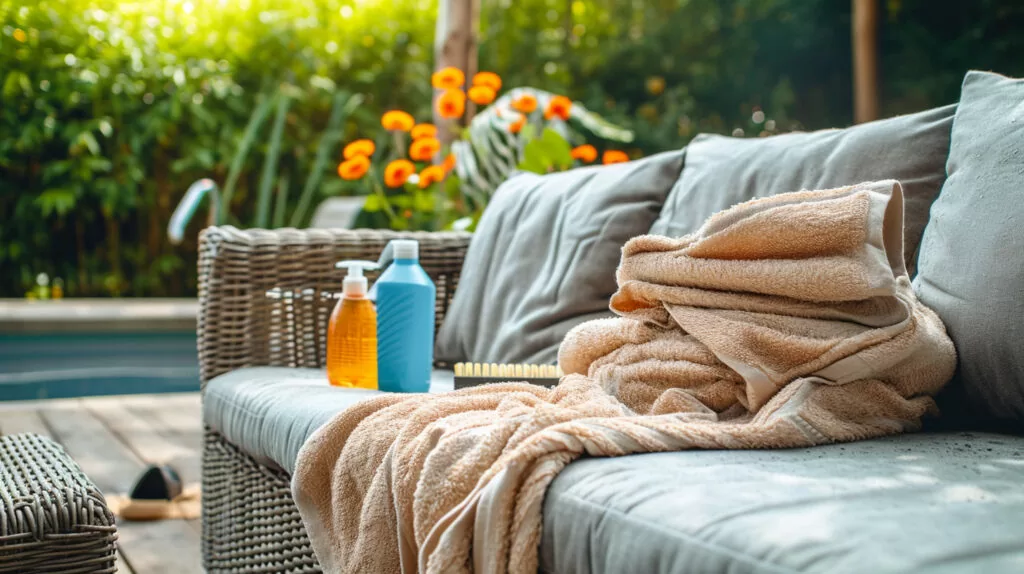
Having the right gear makes cleaning mold and mildew a breeze. Before you get started, gather these supplies:
- Gloves – Protect your hands from harsh cleaning agents. Opt for heavy-duty rubber gloves.
- Face mask – Avoid breathing in mold spores and chemicals. Look for N95 particulate respirators.
- Scrub brushes – Use brushes with sturdy, natural bristles for scrubbing.
- Sponges – Soft sponges help apply cleaners and scrub gently.
- Buckets – Use 2-3 buckets for mixing solutions and rinsing.
- Towels – Microfiber cloths and terry towels help dry surfaces.
- Garden hose – A hose helps rinse away mold, mildew, and cleaning residue.
You’ll also need household cleansing agents like:
- Warm water
- Mild dish soap
- White vinegar
- Baking soda
- Bleach solutions (10:1 water to bleach ratio). For severe mold/mildew growth, bleach quantities may be increased.
Important: Never use bleach and ammonia together. This is very dangerous and can produce toxic chemicals. Anne Marie Helmenstine, Ph.D. does a good job of explaining why here.
Now let’s look at the best techniques for removing mold and mildew from different outdoor furniture materials.
How to Remove Mold and Mildew from Patio Furniture
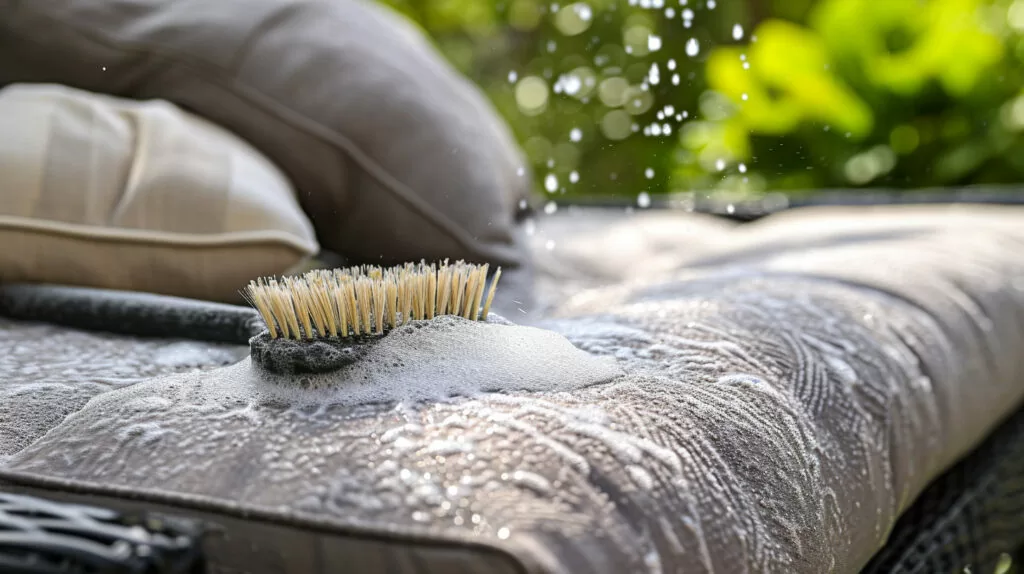
Outdoor patio sets come in many different materials like plastic, wicker, teak, and metal. I wrote a guide on teak furniture here. You should look at this if you want to learn more specifics on mold and mildew as they relate to outdoor teak furniture. Mold and mildew removal techniques can vary based on the furniture’s construction. Here are some of the most effective methods.
Cleaning Plastic Patio Furniture
Plastic outdoor furniture is prone to mildew buildup. But plastic’s non-porous surface makes it one of the easiest materials to clean.
For solid plastic furniture, use a sponge dipped in warm, soapy water. Look for detergents like Dawn dish soap that help dissolve grime. Scrub gently to lift mold and mildew from the plastic’s surface.
For plastic wicker furniture, use a hose or pressure washer. The powerful spray helps blast away mold and mildew trapped deep in the wicker weave. Just be cautious of more delicate resin wicker.
Plastic patio furniture can also be cleaned with a 50/50 vinegar and water solution. Spray it on and let it soak for 10 minutes before wiping. The acidic vinegar disinfects and kills mold spores.
Rinse thoroughly with clean water and dry plastic completely to prevent water spots.
Removing Mold and Mildew from Wicker Furniture
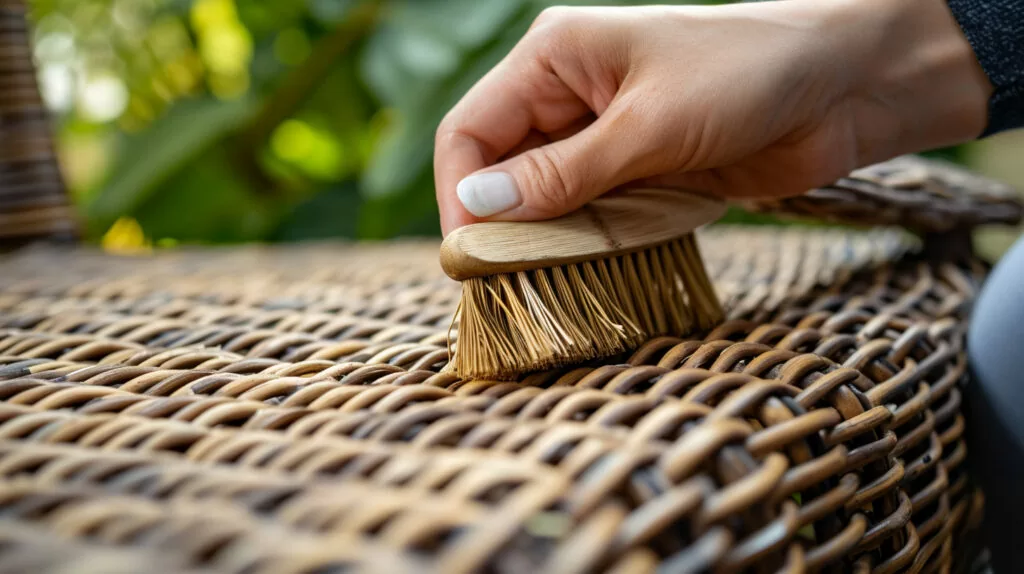
Mold and mildew love to hide in wicker furniture’s woven crevices. That’s why it’s so important to use a hose or pressure washer to deep clean wicker.
Here are the steps for power washing wicker furniture:
- Hose down the wicker to dampen the surface.
- Apply a detergent solution and scrub with a stiff brush to lift grime.
- Adjust the pressure washer to a wide fan spray at medium pressure. Hold the nozzle 6-10 inches away to prevent damage.
- Systematically spray the wicker piece from all angles – front, back, underside, crevices, etc. The powerful spray cleans deep in the wicker weave.
- Rinse away all soap residue with clean water.
- Allow the wicker to fully air dry before applying a protectant like paste wax.
For rattan wicker, test cleaning products on an inconspicuous spot first. Harsh chemicals can damage the delicate material. Stick to mild dish soap or gentle cleaners made for rattan.
Mold & Mildew Removal from Metal Furniture
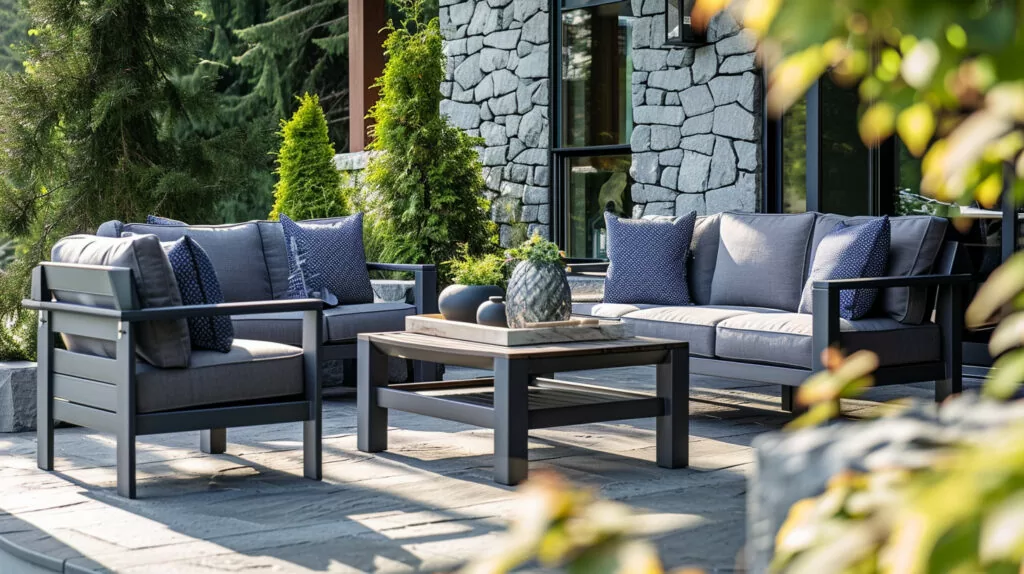
Metal furniture like wrought iron and aluminum resist mold and mildew fairly well. A mild solution of dish soap and water is often all you need.
For occasional cleaning, use a soft sponge and warm, soapy water. Light scrubbing lifts most dirt and debris.
For a deeper clean, try this paste:
- 3-4 tbsp dish soap
- 1 cup baking soda
- 1 cup warm water
Mix into a thick paste. Apply to metal furniture with a soft sponge. Let it set for 10-15 minutes before rinsing. The baking soda gives a gentle abrasive action to dissolve grime.
For rust stains, use a vinegar soak. Spray full-strength vinegar and let it sit for up to an hour before scrubbing and rinsing. This can help lift stubborn rust spots.
Cleaning Mold and Mildew from Outdoor Fabric
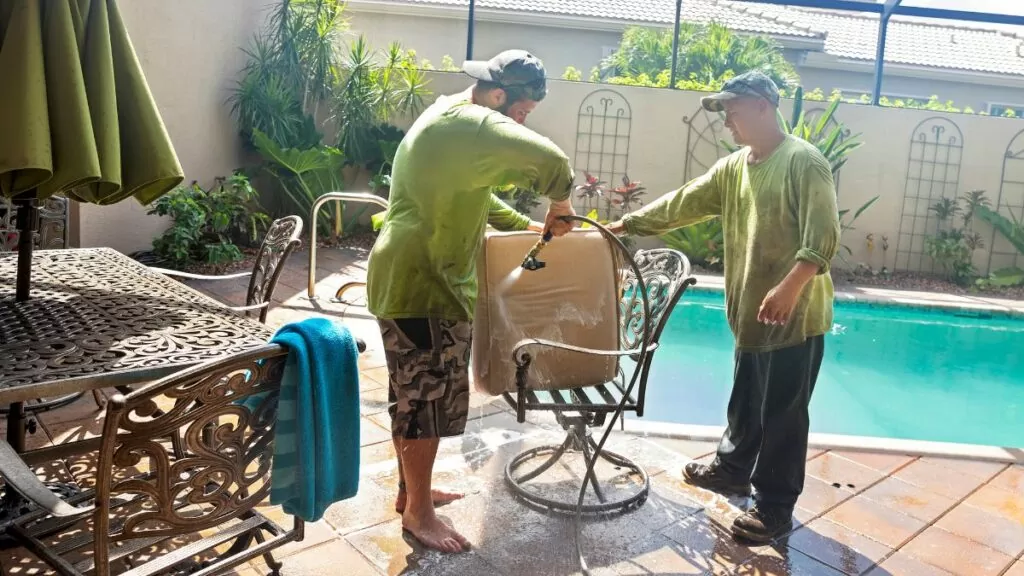
Fabric cushions, umbrellas, and pillows are magnets for mold and mildew. Here are some of the most effective fabric cleaning solutions:
Mildew Stain Removal from Cushions
Outdoor cushions take a beating from sun, rain, dirt, and food spills. That’s why it’s so important to treat mildew stains ASAP.
For removable cushion covers, start by taking them off the frame and brushing away surface dirt. For cushions with fixed covers, vacuum first to lift debris.
Next, check the fabric tag to see what’s recommended. Most outdoor cushion fabrics like olefin, and acrylic can handle bleach solutions.
To remove mildew from washable cushion covers:
- Add 1⁄2 cup bleach to the washing machine drum.
- Fill with lukewarm water to a low water level.
- Add cushion covers and wash on a gentle/delicate cycle with cool water. Avoid using fabric softener.
- Air dry cushion covers in direct sunlight to prevent mold in the future.
You can also spot treat mildew stains by sponging bleach solution onto affected areas before washing.
For non-washable cushion covers, thoroughly wet the fabric and apply a 10:1 bleach/water solution. Let it soak 5-10 minutes before rinsing. This kills lingering mold spores.
Eliminating Mold and Mildew on Fabric Umbrellas
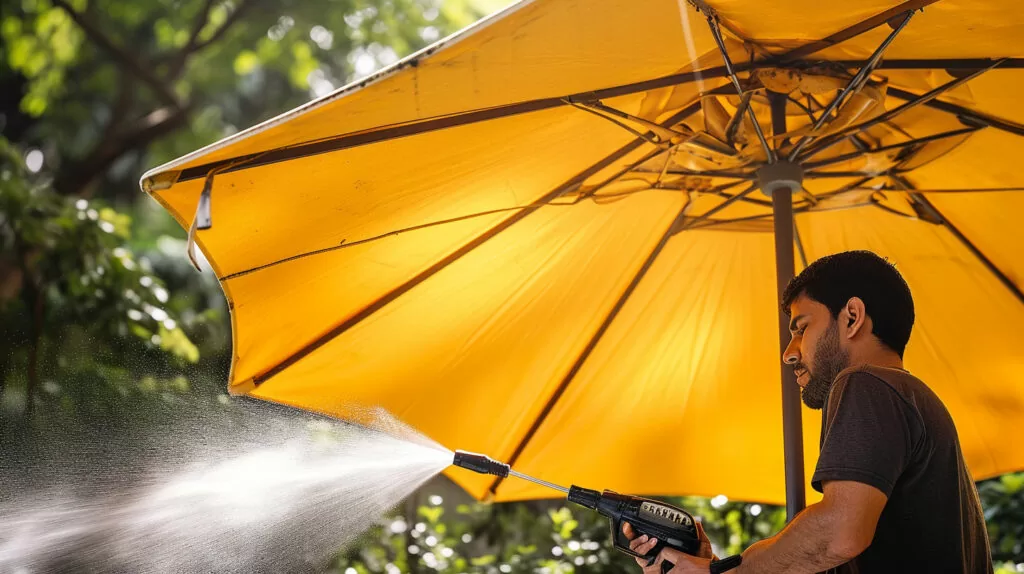
The shady undersides of umbrellas are prime real estate for mold colonies. Stop them in their tracks with these tips:
- Wash regularly – Every 2-3 months, close the umbrella and gently wash the canopy with mild soap and water. Rinse and dry completely.
- Disinfect – Wipe down umbrella fabric with a 50/50 vinegar and water solution. The vinegar kills mold spores and helps remove musty odors.
- Increase airflow – Keep umbrellas open when not in use. This allows air circulation to dry out fabric and prevent mold growth.
- Use UV protection – Look for patio umbrellas with built-in UV-resistant coatings. This protects the fabric from sun damage that can weaken the material over time.
For advanced mold and mildew stains, try this heavy duty umbrella cleaning method:
- Step 1: Mix an all-purpose cleaner like Spic and Span into hot water. Use about 1⁄2 cup per gallon of water.
- Step 2: Use a soft scrub brush to apply the cleaning solution to affected areas of the umbrella. Let it soak for 10-15 minutes.
- Step 3: Use a clean scrub brush and warm water to gently scrub the fabric. Avoid harsh scrubbing that could damage the material.
- Step 4: Rinse thoroughly with clean water.
- Step 5: Fill a spray bottle with equal parts white vinegar and water. Lightly mist the umbrella and let sit for 15 minutes before rinsing again. This disinfects and removes odors.
- Step 6: Allow the umbrella to completely air dry before closing or storing. Mesh and polyester fabrics dry quickly in the sun.
With proper mold removal and regular washing, you can keep patio umbrellas looking fresh.
Now that you know how to eliminate existing mold and mildew, let’s talk about preventive steps to stop future growth.
Preventing Mold and Mildew on Outdoor Furnishings
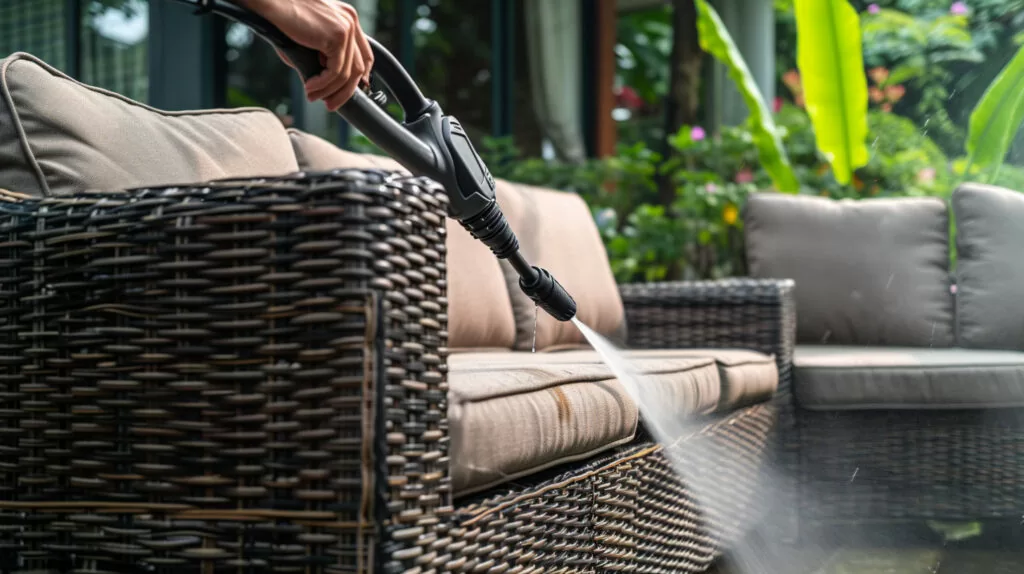
Prevention is the best solution for combatting patio mold and mildew. Here are some tips:
- Allow cushions and furniture to completely dry after rains or cleaning. Never put away damp items.
- Stick to mold-resistant fabrics like acrylic and olefin for cushions and umbrellas. Avoid natural fibers like cotton. I’ll recommend Sunbrella again here. Sunbrella is well-known for its outdoor cushions and it’s no secret. These cushions don’t fade because the actual thread itself is colorized. They’re marine-grade fabrics so they will have much less likely-hood of mold and mildew growth. Here’s some more information if you look for a buying guide for outdoor cushion.
- Add anti-mildew cushion treatments to fabric when new. This creates an invisible shield.
- Hose down patio furniture, especially under surfaces, monthly to remove pollen and dirt.
- Keep umbrellas open when not in use to encourage airflow.
- Check for mold weekly and treat early before it spreads.
- Use breathable patio furniture covers to protect items when stored.
- Clean and sanitize outdoor furnishings thoroughly at end of season before storage.
Calling in the Pros for Severe Mold Infestations
Extensive mold damage requires a professional’s touch. Service pros have commercial-grade tools and products to eradicate severe mold.
Benefits of hiring patio mold removal services include:
- Powerful mold killers that penetrate deep into furniture.
- Truck-mounted power washers that blast away stubborn growth.
- Experience addressing hazardous mold like black mold.
- Mold removal guarantees a long-lasting solution.
- Save time over DIY efforts.
Look for licensed technicians certified specifically in mold remediation. Evaluate experience removing mold from outdoor furniture materials.
With the right methods and some diligent maintenance, you can keep your patio mold-free and ready to enjoy. Just take action at the first signs of mold or mildew. A little time invested now saves you from replacement costs down the road.
Here’s to many relaxing hours spent with family and friends in your fresh, clean outdoor living space! Let us know if you have any other questions about keeping patio furniture mold-free.
More Tips to Clean Outdoor Furniture:
- How to Protect Patio Furniture from Freeze Damage
- How to Protect Outdoor Furniture from Snow and Winter Damage with the Proper Patio Furniture Maintenance

Cheryl is an award-winning landscape design consultant in San Diego, CA. She has over a decade of experience in the design world, working on both interior and exterior projects. She received her certification in design in 2010 and has contributed to the design of 7 separate furniture collections. Cheryl began lending her expertise to Patio Productions’ blog in 2012. When she’s not living in the furniture and design world, she’s busy playing with her dogs at home, or curling up with a cup of black coffee and a beautiful book on modern design. Her favorite patio furniture are her Acapulco Chairs in lightning blue.

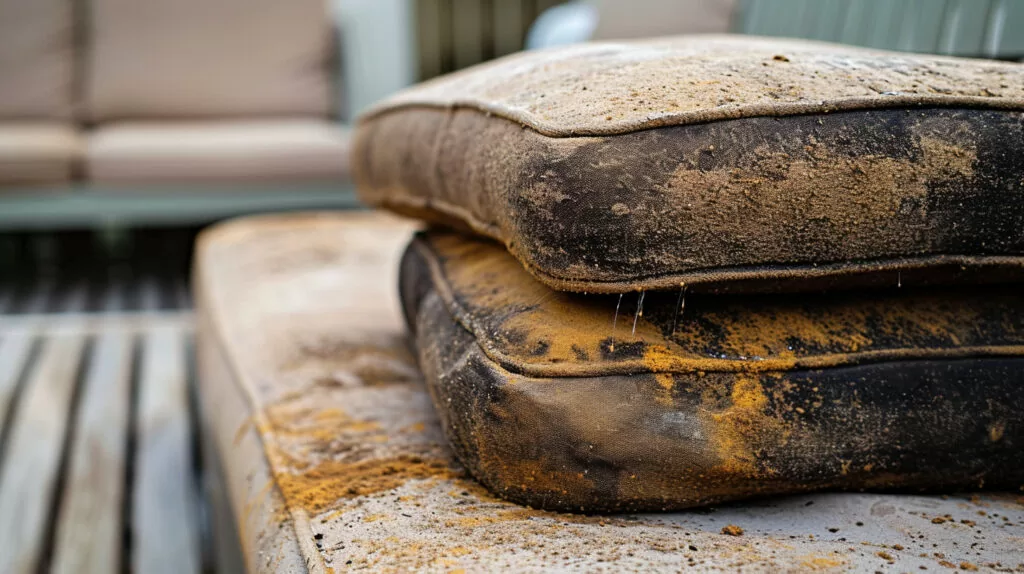
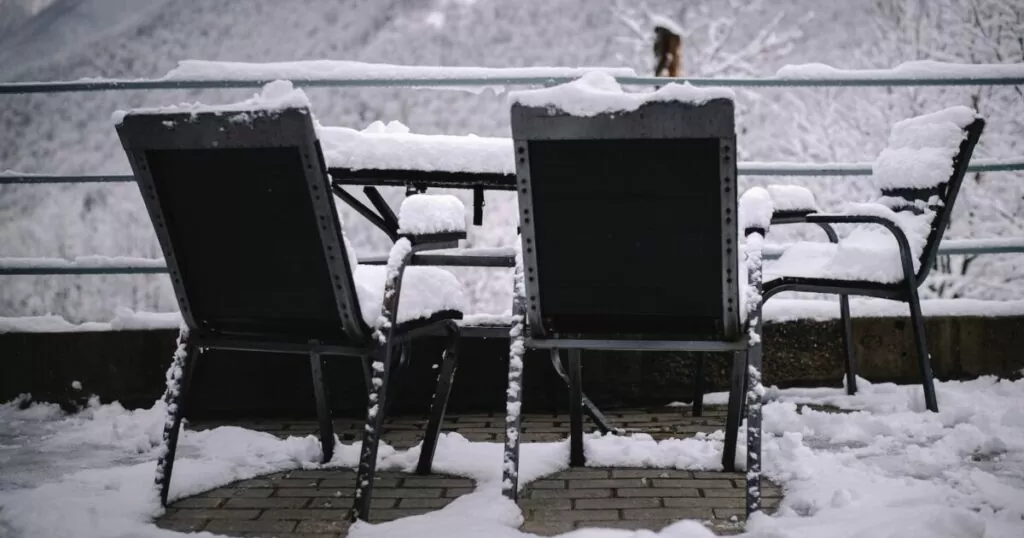
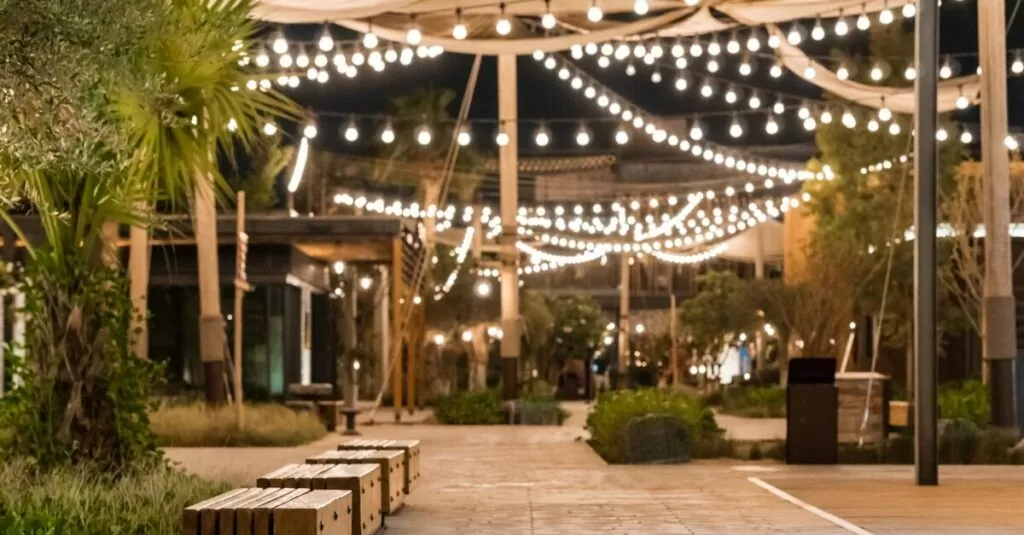
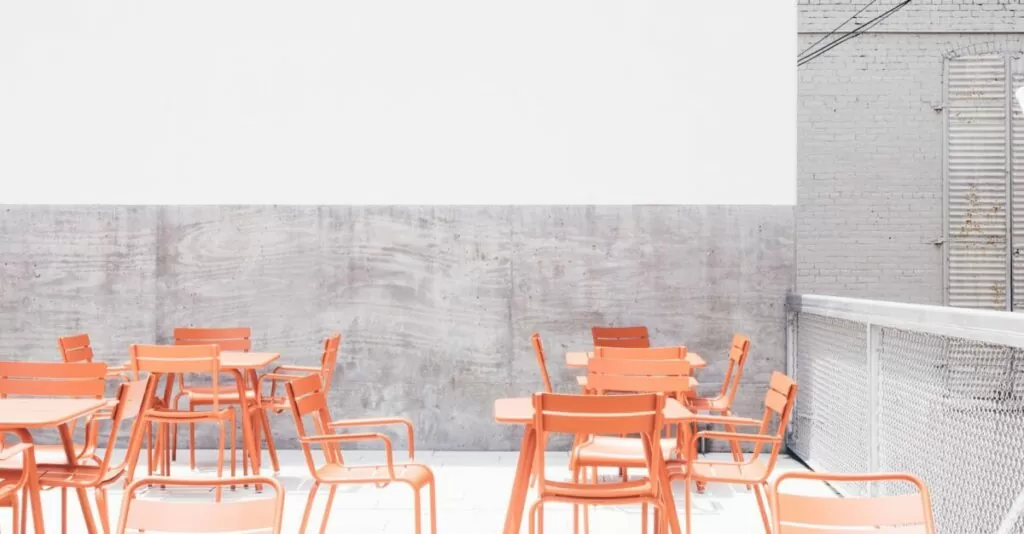
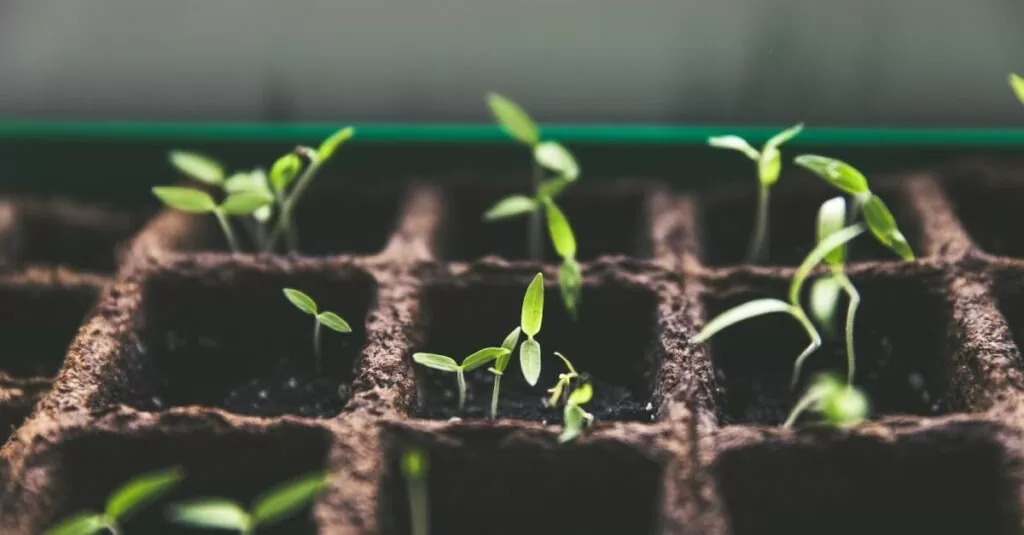
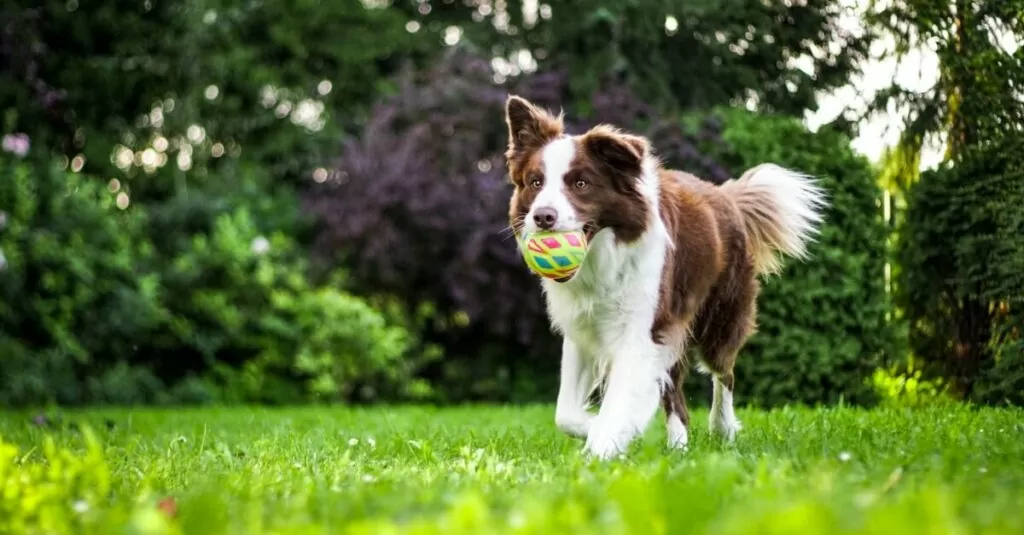
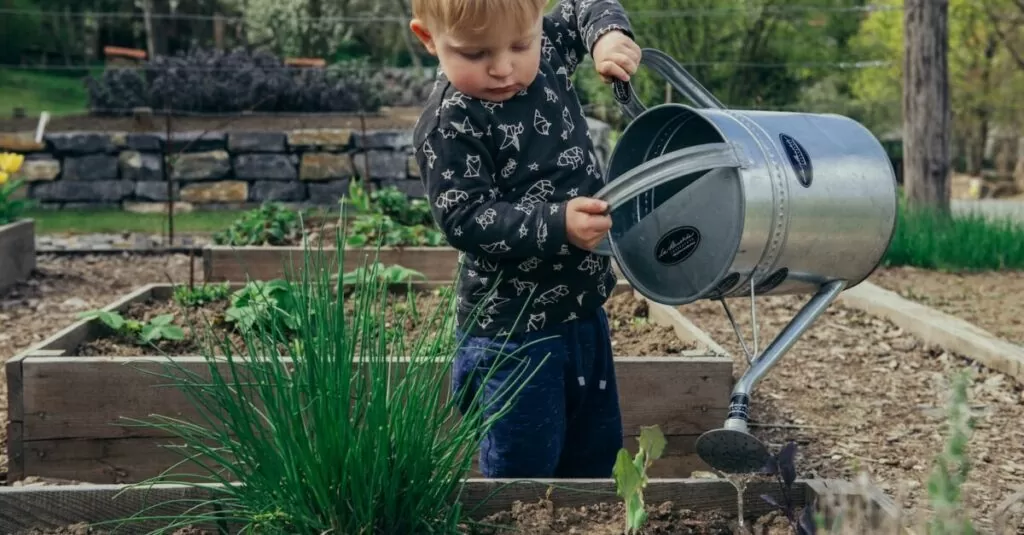
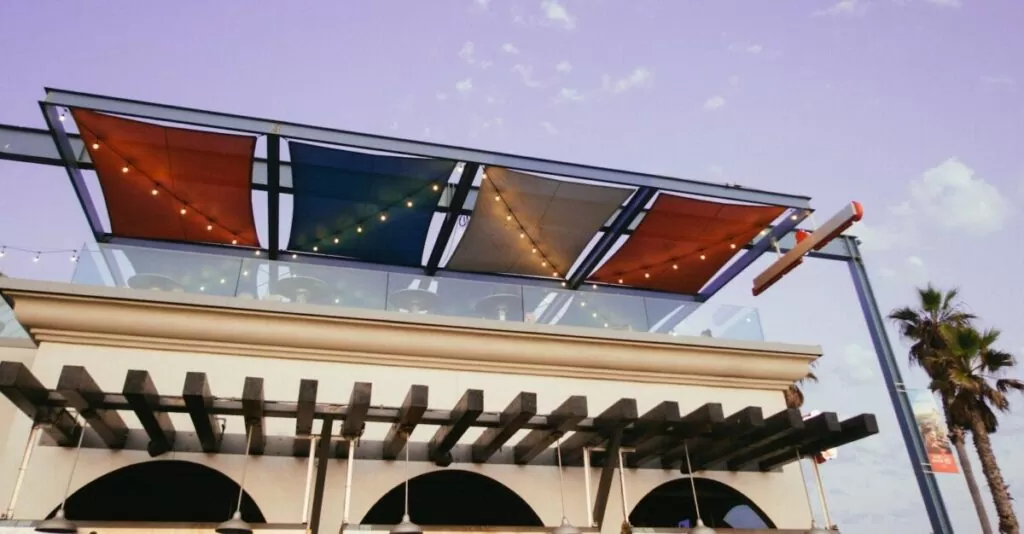


I bought 12 poolside chairs 8 weeks ago they are all mildewed they stay out in rain and sun
This has never happened before. Other chairs seem to be same active material not molded..your thoughts? Furniture store said to.bad.
While some outdoor materials may look the same in appearance, they are not all made the same. Some are more mold and mildew resistant than others. Did the mold originate from underneath the cushions? If so, I would recommend storing the cushions away when it rains or hanging them to dry afterwards. Mold is usually caused by an excess of moisture, and the foam inside cushions can keep moisture trapped inside. If I knew the exact material of your furniture I might be able to provide more specific advice.
have 2 wood twig rockers made by Amish. they’ve been on screen porch (not weatherproof), and have developed black spots (mildew?) specifically on the arms of the chairs.
what can I use to clean these? thanks asap.
Great writing! You have a flair for informational
This article is worthy of recognition and comment. I
This is truly unique and excellent information.
Thank you for your attention to detail and great writing style. Your professionalism shows in your article. I like your interesting views and appreciate your unique ideas. This is quality.
Thanks but from a practical standpoint useless. How much? You can’t recommend a mixture without recommending the quantities to mix.
Good point. Thank you for your comment. We will try and update this with quantities as soon as possible.
I have two white plastic Sunbeam patio chairs. They had developed dark spots on the topside. I have finally removed the spots and now I’m wondering if I can do anything to keep the spots from coming back. I would appreciate any suggestions.
Thank you for your comment. Does your furniture use cushions? And if so, do the dark spots form beneath the cushions? When people mention dark spots on their furniture the first thing that comes to mind is mold or mildew. Mold & mildew form where there is excess moisture that has nowhere to go, just like the bottom of a wet cushion that got soaked after a rain storm. If this sounds like your situation then we would recommend bringing your cushions inside or storing them away when it rains.
Amount of each ingredient would be nice to add.
Thank you for your comment. We are working on an update for this post.
Is there a spray that is commonly sold in stores like wal mart that kills existing mold/mildew on patio furniture cushions?
Thank you for your comment. That is a very good question.
If you search on wal mart’s website for “outdoor mold removal” you will find some options. The cleaner we noticed comes as a concentrated formula that you mix with equal parts water. The product claims to be safe for patio furniture and fabric awnings, so it must be good enough for patio furniture cushions as well.
We also tried searching the Home Depot website just out of curiosity and they offer many more options than wal mart does. Just something to take into consideration.
Some cleaners claim to be safe around pets, plants, etc. Those are other factors to consider as well.
If your cushions are made with Sunbrella, you can use bleach on the fabric itself without damaging it. Just take a water bottle, add a few drops of bleach, and spray down the cushions where you see mold growth.
This is great information for homeowners that love to enjoy their outdoor spaces. Having that outdoor space that allows you to relax and enjoy your home is always a pleasure, but that is not always the case when that space covered in mold and other contaminants. Patio furniture is not cheap and keeping nice year around is not always easy. These tips and cleaning techniques are sure to keep homeowners sitting outside all spring, summer, and fall long if followed and implemented correctly. Thanks for the tips!
Hello,
Thanks for these great tips! for the homemade solution, how much of each ingredient should i add? Thank you
Great tips but nothing I’ve tried has helped removed these darker colored stains. I live in Florida so we have plenty of sun but the humidity is terrible on the furniture. The cushions exposed to environment always get mildew looking spots. My cushions almost look like they are supposed to be spotted there are so many !
It’s a great patio set but after 8 years the bottom cushions just can’t be cleaned to get out the bad stains. The small spots come up fine though.
Any suggestions on the best cleaning solution for stubborn stains? One cushion even had e-cig juice spilled on it 4 years ago during my daughter’s baby shower! Never been able to remove that one.
High humidity is definitely going to make your life harder when it comes to taking care of your outdoor cushions. The best outdoor cushions are only warrantied for 5 years, but can go much longer if well taken care of. If the cushions are Sunbrella fabric, they can be spot treated with a bleach mixture/cleaner. We recommend going on the Sunbrella fabric website and looking up their care & maintenance tips. They provide specific tips for specific stain types. A wealth of knowledge at your fingertips.